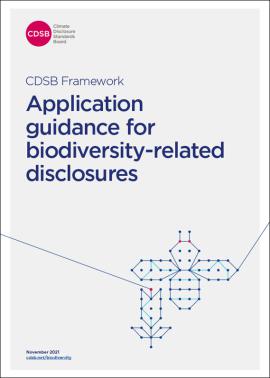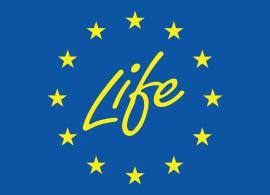The CDSB Framework application guidance for biodiversity-related disclosures (the Biodiversity Application Guidance) has been produced by CDSB to assist companies in the disclosure of the material information about the risks and opportunities that biodiversity presents to an organisation’s strategy, financial performance and condition within the mainstream report (biodiversity-related financial disclosure). It is designed to supplement the CDSB Framework for reporting environmental and climate change information to investors (CDSB Framework).
Background to the Biodiversity Application Guidance
The Biodiversity Application Guidance is part of a series of CDSB Framework application guidance, which aims to extend the TCFD recommendations and its core elements to nature. It is designed to support the intended users in applying the CDSB Framework to the natural capital elements of climate change, water, and biodiversity. Following the guidance on climate-related and water-related disclosures, the Biodiversity Application Guidance is the third CDSB Framework supplementary application guidance document that is designed to enhance the quality of disclosures for such significant matters.
Working in conjunction with the reporting principles and requirements of the CDSB Framework, each application guidance assists companies to develop clear, concise, consistent, and comparable (inter-period comparability of the same entity and inter-entity comparability) disclosures, enhancing the decision-usefulness of their mainstream reporting on sustainability-related financial matters to investors. Given the interconnected nature of environmental topics, the application guidance documents are complementary with some overlapping subtopics.
The objective of the Biodiversity Application Guidance is to support organisations in preparing high-quality disclosures that enable users of mainstream reports to assess material biodiversity-related financial information. By ensuring that investors are receiving the material biodiversity-related information needed for effective capital allocation, the Biodiversity Application Guidance aims to assist in driving the transition to a sustainable and resilient economy. The intended users are organisations, both single companies and corporate groups, and those responsible for financial, governance and sustainability reporting.
Structure of the Biodiversity Application Guidance
The Biodiversity Application Guidance is designed around the first six reporting requirements of the CDSB Framework:
- REQ-01 Governance
- REQ-02 Management’s environmental policies, strategies and targets
- REQ-03 Risks and opportunities
- REQ-04 Sources of environmental impact
- REQ-05 Performance and comparative analysis
- REQ-06 Outlook
The first six reporting requirements set out the key content elements for reporting material environmental information in the mainstream report. For each of the reporting requirements, the Biodiversity Application Guidance provides:
- A checklist including suggestions for effective biodiversity-related disclosures;
- Detailed reporting suggestions and guidance in relation to biodiversity-related issues to complement the CDSB reporting requirements;
- A selection of external resources to assist companies in developing their mainstream biodiversity reporting; and
- Explained examples of good practice in mainstream biodiversity reporting.
In addition, the Biodiversity Application Guidance provides an overview of the significance of biodiversity to business, explaining the importance of biodiversity-related business risks and opportunities, and highlighting the key characteristics of biodiversity and their importance to corporate reporting.
Download in | English | French | Portuguese | Spanish
Susbcribe to our newsletter and be the first to know.
With the contribution of the LIFE Programme of the European Union. The content of this page is the sole responsibility of the author and can under no circumstances be regarded as reflecting the position of the European Union.

This publication is funded in part by the Gordon and Betty Moore Foundation.

Funding for this research was provided by UK PACT Green Recovery Challenge Fund.

